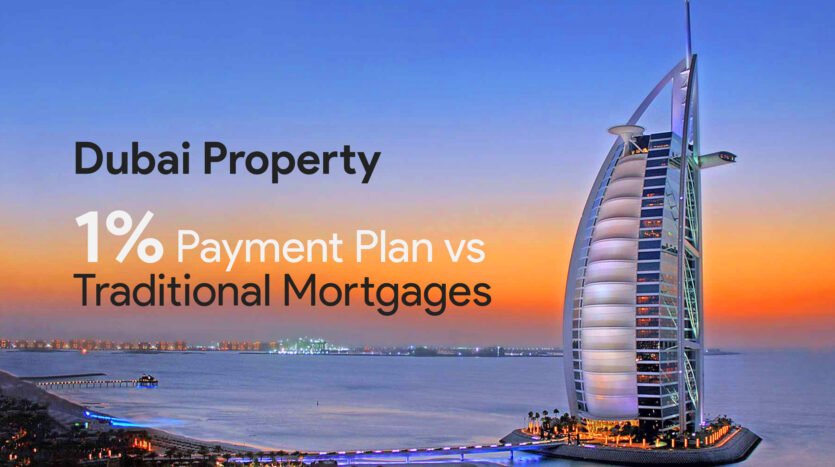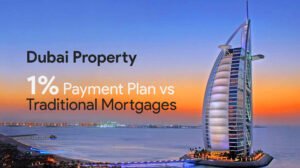Dubai Property Buyers: Weighing the 1% dubai Payment Plan Against Traditional Mortgages
In Dubai’s thriving real estate market, more tenants are contemplating home ownership, prompting developers to introduce payment plans that align with buyers’ financial capacities. One such option gaining traction is the 1% dubai payment plan, aimed at providing an accessible path to home ownership.
The 1% dubai Payment Plan: Flexibility and Accessibility
The 1% dubai payment plan is designed to ease the financial burden for buyers by allowing them to pay 1% of the dubai property’s total value each month. For instance, a property priced at AED 1 million would require monthly payments of AED 10,000 over approximately eight years. This scheme is particularly appealing to end-users and investors who may not have significant upfront capital but seek to gradually own property while managing payments efficiently.
Developers like Damac have capitalized on this trend, offering villas in their Park Greens project at Damac Hills 2 starting at Dh2.89 million under the 1% payment plan. This model aims to provide a convenient and manageable financial arrangement, making home ownership more accessible.
The Mortgage Deal: Immediate Ownership and Long-term Savings
On the other hand, traditional mortgages typically require a higher initial down payment but offer lower monthly installments over an extended period. For example, a 20-year fixed mortgage at a 5% annual interest rate for a property valued at AED 1 million would cost the buyer AED 1.6 million in total, with monthly EMIs of around AED 6,700.
Mortgages can provide the advantage of securing property ownership immediately, with the potential for dubai property value appreciation over time. However, current mortgage rates in Dubai are relatively high, with flat rates ranging from 4-5% and floating rates between 7-8%, making them less attractive compared to previous years.
Weighing the Options: Key Considerations
Choosing between the 1% dubai payment plan and a traditional mortgage depends on the buyer’s financial situation and investment goals. The 1% payment plan offers flexibility and lower initial costs, making it suitable for buyers with limited upfront funds. However, this plan may result in higher overall costs due to the extended payment period and potential additional fees. It is also important to consider the stability of the property’s market, as properties in low-demand areas may carry risks of negative cash flow and capital loss .
Conversely, a traditional mortgage may be more beneficial for those who can afford higher initial payments and prefer to lock in ownership immediately, potentially saving on long-term costs and benefiting from property appreciation.



